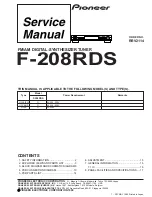
PAGE 19
where F = Forward power (watts), R = Reflected power (watts)
SWR is measured using a
device called an “SWR bridge”,
inserted in the transmission line
between the transmitter and the
antenna.
This
circuit
measures
forward and reflected power from
which SWR may be calculated
(some meters calculate SWR for
you). More advanced units can
measure
forward
and
reflected
power simultaneously, and show
these values and SWR at the same
time.
An antenna tuner is a device
used to cancel out the effects of
antenna
reactance.
Tuners
add
capacitance to cancel out inductive
reactance in the antenna, and vice
versa. Simple tuners use variable
capacitors
and
inductors;
the
operator adjusts them by hand
while observing reflected power on
the SWR meter until a minimum
SWR
is
reached.
The
LDG
Electronics Z-817H automates this
process.
No tuner will fix a bad antenna.
If the antenna is far from resonance, the inefficiencies inherent in such operation are inescapable;
it’s simple physics. Much of the transmitted power may be dissipated in the tuner as heat, never
reaching the antenna at all. A tuner simply “fools” the transmitter into behaving as though the
antenna were resonant, avoiding any damage that might otherwise be caused by high reflected
power. For best performance, the antenna used should always be as close to resonance as is
practical.
THE LDG Z-817H
In 1995, LDG Electronics pioneered a new type of automatic antenna tuner. The LDG design
uses banks of fixed capacitors and inductors, switched in and out of the circuit by relays under
microprocessor control. An additional relay switches between high and low impedance ranges. A
built-in SWR sensor provides feedback; the microprocessor searches the capacitor and inductor
SWR
=
1
+
R
F
1
−
R
F




































